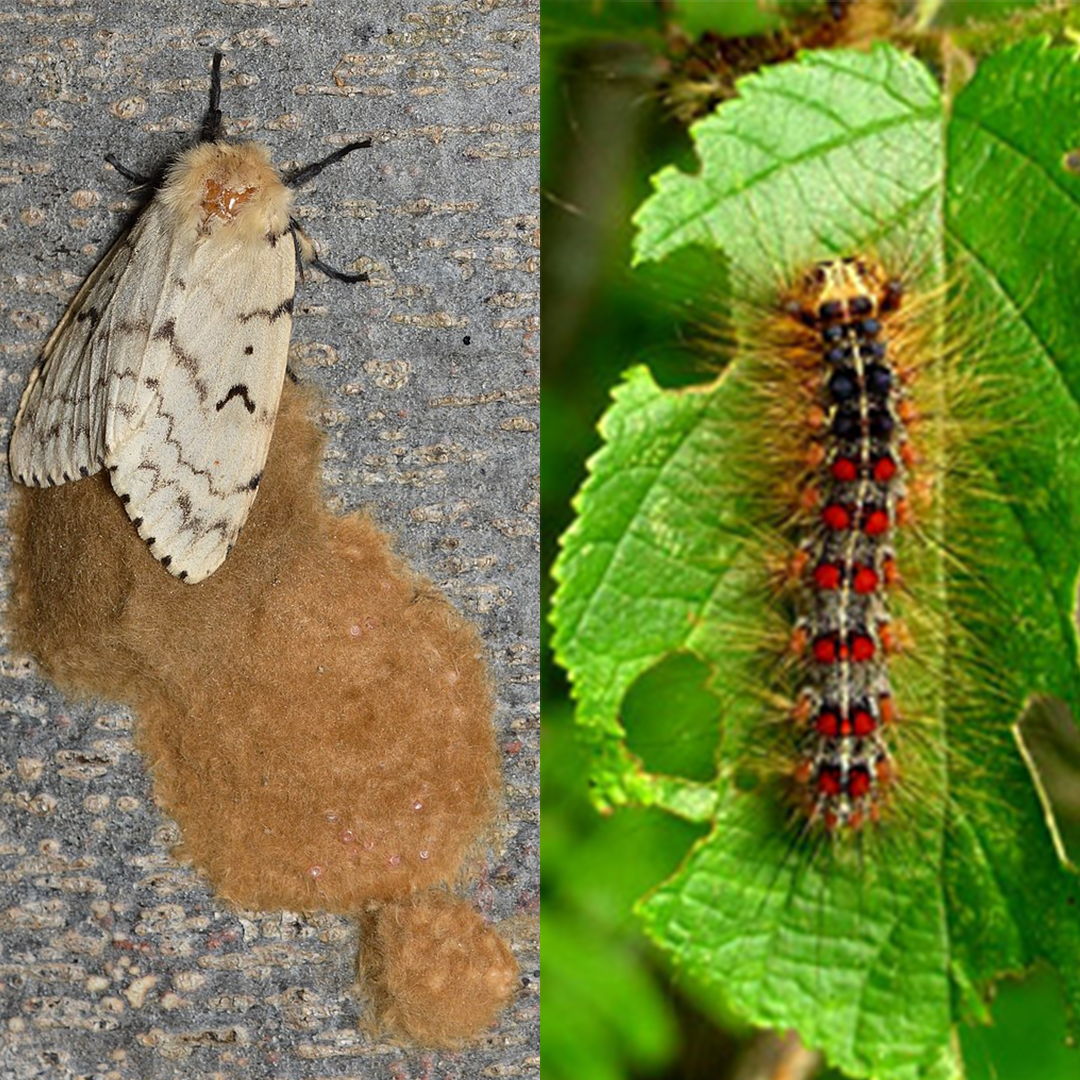- Departments
- Forestry
- Spongy Moth
Spongy Moth

The spongy moth (previously referred to as gypsy moth) was introduced to North America in 1869. It has since become one of the most significant insect pests of forest and shade trees in the eastern United States. Spongy moth is now established in eastern Wisconsin and continues to move westward.
Approximately every 10 years the spongy moth population explodes to very high numbers. During these outbreaks, the caterpillars strip trees of their leaves, defoliate neighborhoods or even entire forests in late June. While most healthy trees can survive a single defoliation, trees that are already stressed or which suffer drought or other damage that same summer may die. At their peak, the sheer numbers of caterpillars crawling all over becomes an annoyance, and can lead some people to try remedies that can be more damaging to the environment and themselves than the outbreak itself!
You can predict whether an outbreak will cause defoliation of your trees 9 months before it will happen by counting the number of egg masses on your trees in the fall. The egg stage of the spongy moth is also the easiest one for homeowners to attack and kill large numbers of spongy moth, helping reduce the pest population and damage the following spring.
Spongy moth egg masses are the life stage most frequently observed. They remain in place from the time they are laid in August and persist well after caterpillars hatch in May. Egg masses are typically teardrop shaped and about 1-2 inches long. They contain all the eggs a female moth produces, typically 600-1,000 for a healthy female. Egg masses are a buff yellow-brown color. Similar to the color of a manila folder. The look like they’re made of a rounded pad of felt and are firm to the touch. The mass will persist after the eggs have hatched in May, sometimes into the following winter. These empty masses are bleached, often torn up, and are soft and spongy to the touch.
What can be done to manage spongy moth on your trees?
- Inspect your trees for egg masses and treat them with Golden Pest Spray Oil by mid-April before larvae begin to hatch
- Bring in samples of larvae and adult moths for positive identification
- Report evidence of spongy moth activity to the Village Forester
Source: Identifying & Managing Gypsy Moth Egg Masses, WI-DNR publication #FR-1710

